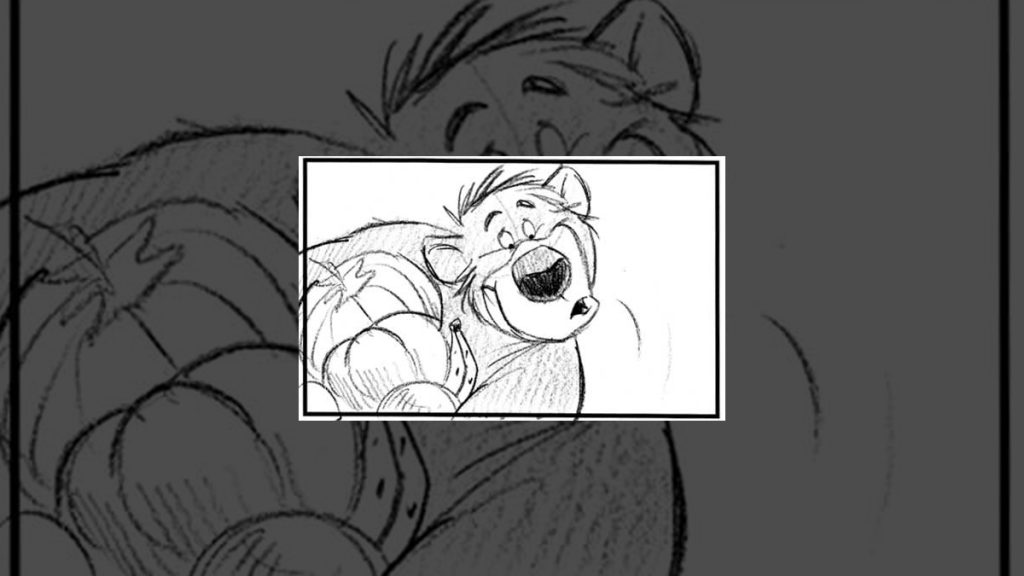The other evening, a pal who works for an animation studio
that shall remain nameless was telling me about the project he was developing.
It was great news to hear he had garnered the attention of the studio bosses
and was moving into development on his new movie. But I couldn’t but think how
things have changed in the cartoon business.
People constantly tell me how much “The Jungle Book” impressed them. We thought it
was okay. But this movie made a ton of movie back in 1967 and helped save
animation at Disney. Copyright Disney Enterprises, Inc. All rights reserved
Movie projects today
tend to have lengthy development cycles and your youngest child could easily
grow up while you’re working on a movie. If you’re lucky, you might even be
pulling down a sizable paycheck while doing so. How did I miss out on the sweet
process I’ve come to characterize as “the animation gravy train?”
My first story job on an animated feature film was a totally
different experience. We didn’t have multi-million dollar budgets nor did we
have years of development. Back in the olden days, work had to be done and done
quickly. Honestly, that’s the way it was.
Of course, being a newbie to story development I didn’t know any different.
When you do this job for the first time you simply assume that’s the way it’s
always been done.
Storyboard drawings that Bill Peet did for the version of “The Jungle Book” that he was
developing for the Studio. Copyright Disney Enterprises, Inc. All rights reserved
When the Old Maestro, Walt Disney expressed dissatisfaction
with Bill Peet‘s version of Rudyard Kipling’s “The Jungle Book,” he wanted the
entire story retooled. Plus he wanted the new story completed in record time.
The new story team quickly jumped on the project to see what we could salvage
from the previous version. Unfortunately, there wasn’t much. At least not much
as far as Walt Disney was concerned. That meant we had to start building new
storyboards and building them fast.
Because of the rapid turnarounds there was no time to over-think a sequence.
You simply jumped on it and made it work. Should you take a wrong turn, the Boss
(who happened to be an excellent story editor himself) put you back on track.
Our turnaround time was less than a year. Keep in mind this was a feature film
that is now considered by many to be a classic.
Today, I can’t help but wonder why development on an
animated feature film takes so long? To be sure, the process is not an easy
one. This is something I’m well aware of having done it a good portion of my
career. You can bet there will be false starts and wrong turns. One sequence
that often plays well may be followed by a “train wreck.” Of course, when you
fix the “train wreck” that means the preceding sequence will have to be
rewritten as well. When Walt starts to arch his eyebrow and tap his finger, you
could very well find yourself in bigger trouble. Such are the joys of story
development in the big time.
This is Walt Disney scowling at our “Jungle Book” storyboards. The Boss wanted this film
turned around quickly. Because of time constraints, we didn’t have the luxury of over-
thinking every sequence. But that limitation wound up being a blessing
We took the wild ride back in 1966, and we did so with the Boss
nipping at our heels. We never gave any thought to failing in this important
assignment. At the 1960s version of Disney Studios, it would appear that failure
was not an option. Especially when the guy you had to please was Walt Disney.
Of course, we had another important advantage. We didn’t have to ask the
question “What would Walt want?” The Old Maestro made it quite clear what he
wanted. We simply had to deliver. After all, it was our butts that were on the
line.
1966 is a long time ago, and I look back fondly on that wild
ride on the “Jungle Book” express. I’m grateful I was chosen to take the ride
and it was probably the most important story assignment I’ve had in my career.
Vance Gerry and I thought that we’d do some silly stuff with the kid and the snake.
Thankfully, Walt thought that it was funny and asked for more.
However, I can’t help but be somewhat envious of today’s story development
process. An assignment where you’re often given ample time and money to fine
tune a project. After screaming down the tracks at breakneck speed I’d love to
– just once – take that long, slow ride on the animation “gravy train.”
Did you enjoy today’s look back at how Disney’s “The Jungle
Book” actually came together? Well, if you’d like to learn more about the many
amazing & amusing adventures that this Disney Legend has had over the
course of the 40+ years that he’s worked in the animation industry, then you
definitely want to check out some of the books which Mr. Norman has written.
Floyd’s most recent effort – “Disk Drive: Animated Humor
in the Digital Age” – is available for purchase through blurb.com. While
Mr. Norman’s original collection of cartoons and stories — “Faster!
Cheaper! The Flip Side of the Art of Animation” – is still for sale over
at John Cawley’s Cataroo. And if you still haven’t had your fill of Floyd, feel
free to move on over to Mr. Fun. Which is where Mr. Norman posts his musings
when he’s not writing for JHM.
